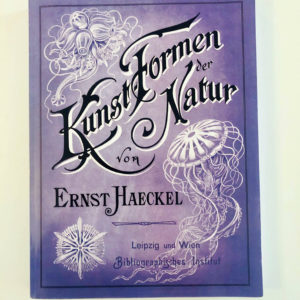Ernst Haeckel’s “Kunstformen der Natur” (Art Forms of Nature) is a significant work in the history of science, particularly in the fields of biology and art. Published in 1904, the book is a collection of 100 lithographic plates depicting various organisms, from microscopic diatoms to complex invertebrates and vertebrates.
One of the main contributions of “Kunstformen der Natur” is its promotion of the theory of evolution. Haeckel, a vocal proponent of Charles Darwin’s theory, used the illustrations in the book to demonstrate the evolutionary relationships between different organisms. The illustrations also helped to popularize the idea of the “tree of life,” a visual representation of the evolutionary connections between all living things.
In addition to its scientific contributions, “Kunstformen der Natur” also had a significant impact on the art world. The illustrations in the book, which were created by Haeckel himself, are considered to be some of the earliest examples of Art Nouveau. The influence of the book can be seen in the work of many artists of the time, including Gustav Klimt and Egon Schiele.
“Kunstformen der Natur” also played a role in the development of science education. The book’s combination of scientific accuracy and artistic beauty made it an effective tool for teaching about the natural world. It was widely used in schools and universities as a textbook and is still considered as a reference and source of inspiration for science education today.
Overall, “Kunstformen der Natur” has had a lasting impact on both science and art. Its illustrations continue to be admired for their beauty, and the book’s promotion of evolution and the tree of life has had a lasting influence on the field of biology. It is considered as a classic of natural history and science education, and its illustrations are still widely used today in scientific and educational publications.





